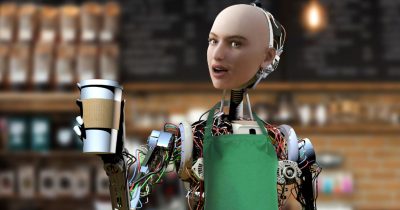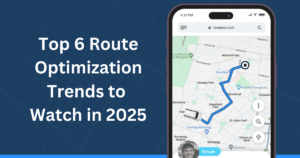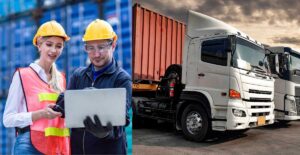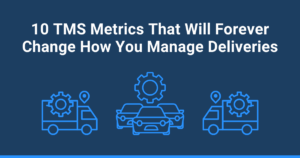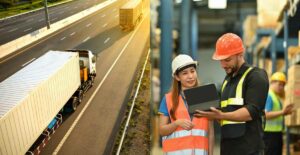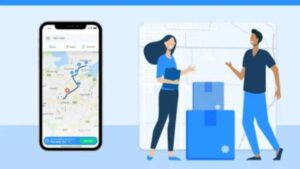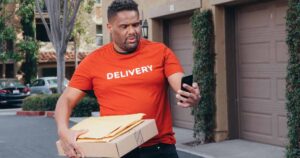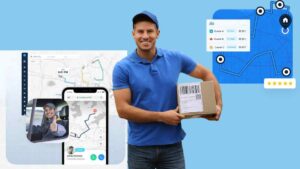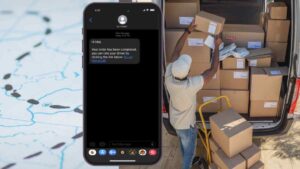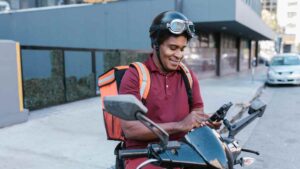
It’s a Friday night and you’ve just arrived home from work, too tired to drive down to your favorite restaurant to buy food. Thanks to robotic food delivery, getting into your car doesn’t have to be an option anymore. You can now order groceries and have them delivered to your doorstep.
Retail chains are hopping onto the fast delivery trend and delivering items to customers quickly. Talk about the ultimate convenience. Walmart has brought the ease of shopping to thousands of homes in Dallas Fort-Worth with drone delivery available to 75% of the community.
Technology is changing the face of restaurant delivery and even the way we order or receive our most craved take-away meal.
In February, Uber Eats introduced robotic food delivery in Japan. This cool initiative was done in partnership with Mitsubishi Electric Corporation and robotics company Cartken.
Why are restaurants using robotic food delivery?
Robots can significantly reduce the cost of delivery. Robots do not require wages, tips, or breaks, unlike human delivery drivers. This reduction in labor costs is particularly attractive in an industry known for its thin profit margins.
Robotic deliveries can offer a more predictable and transparent delivery experience with real-time tracking, autonomous navigation, and automated operation.
Customers can track their orders in real-time and receive notifications upon arrival. This level of service enhances customer satisfaction and loyalty.
Additionally, business management platforms are crucial in enabling smart catering by providing cloud-intelligent service support for robotic food delivery systems.
But robotic food delivery is not just taking place with restaurants. Earlier this year, the University of South Carolina in partnership with Grubhub and Starship Technologies, introduced autonomous food delivery.
Is a drone a robot?
Yes, a drone is a type of robot. Drones, also called unmanned aerial vehicles (UAVs), can fly on their own or be remotely controlled without a pilot.
They combine robotics and aeronautics to stay in the air, often using designs like quadrotors with four rotors. Drones use advanced navigation solutions for various tasks, ensuring precision and efficiency.
Drones are used for various tasks, such as:
- Aerial photography
- Surveying
- Package delivery
- Military operations
- Environmental monitoring
- Home security
Their ability to gather data and images from above makes them useful in many fields.
Drones also utilize visual SLAM positioning for accurate and adaptable navigation, enhancing their operational capabilities.
Amazon is also making drone delivery possible. Recently the company announced it will bring drone delivery to Arizona, USA.
Drones are a game changer
The International Research Journals reports the use of drones in food delivery isn’t just a novel concept; it’s a potential game-changer.
“By leveraging GPS technology and autonomous navigation systems, drones can ensure quick and precise deliveries. They can navigate efficiently and avoid obstacles as soon as they encounter obstacles. However, challenges such as regulatory hurdles, airspace management, and payload capacity limitations remain to be addressed for widespread adoption.”
The modular chassis design enhances the drone’s ability to handle obstacles and ensure smooth operation.
Here’s a list of robotics companies who specialize in designing and building robots for food delivery.
Robotic food delivery companies
Nuro
Nuro is a robotics company based in California. The company develops autonomous delivery vehicles. Nuro’s vehicles are supported by a maintenance platform for efficient operation.
Additionally, Nuro utilizes a scenario data collection platform to optimize delivery routes and operations. The company signed a deal with Uber Eats to have food delivered to customers in California and Texas with its driverless pods.
Kiwibot
Kiwibot, founded in 2017, is a robotics company specializing in last-mile delivery solutions using autonomous robots.
Headquartered in Berkeley, California, the company aims to provide safe, efficient, and cost-effective delivery services, focusing on reducing environmental impact and enhancing urban living.
Kiwibot’s robots use smart expressions to enhance customer interaction and light interaction to indicate their status and tasks clearly.
Previously it teamed up with Grubhub to offer robot delivery services on college campuses across the US.
Wing
Locate2u has been closely following drone delivery company Wing in recent months. The company along with DoorDash are answering the need for speed when it comes to fast delivery.
Wing was founded in 2012 and is blazing a trail in the field of drone delivery, aiming to transform how goods, including food, are delivered through the air. Wing’s drones communicate within the same network to optimize delivery efficiency and decision-making.
Benefits of robotic food delivery
Unmatched speed and efficiency
One of the most significant benefits of robotic food delivery is the unparalleled speed and efficiency it offers. Robots utilize advanced navigation solutions, such as Laser SLAM and Visual SLAM, to follow optimal routes, avoiding traffic and delays.
This ensures that food reaches customers faster and fresher, enhancing overall satisfaction. The precision and reliability of robotic systems minimize human errors, leading to more accurate and timely deliveries.
Enhanced food safety and hygiene
Robots maintain stringent hygiene standards, significantly reducing the risk of contamination. Unlike human delivery personnel who may come into contact with various surfaces, robots operate in a controlled environment, ensuring that food remains untouched and safe.
Robotic food delivery systems are supported by a maintenance platform to ensure consistent hygiene and safety standards. This is particularly crucial in the post-pandemic era, where customers are more conscious of hygiene and safety.
Cost-effective solution with automated operation
Robotic food delivery presents a cost-effective alternative for both businesses and customers. With lower operational costs compared to human labor, businesses can offer more competitive pricing.
The automated operation of these robots further reduces operational costs and enhances efficiency, enabling smart catering and business management.
Customers benefit from reduced delivery fees, making the service more accessible and appealing. Additionally, the efficiency of robots reduces wastage and ensures optimal resource utilization.
Contactless delivery for increased safety
The demand for contactless delivery has surged, and robotic food delivery perfectly aligns with this need.
Robots can deliver food directly to customers’ doorsteps without any physical interaction, providing a safer option for those concerned about social distancing and minimizing human contact.
Business management platforms support the efficiency and safety of contactless delivery by enabling smart catering and automated operation and maintenance.
This feature has been particularly beneficial during health crises, ensuring uninterrupted service while maintaining safety protocols.
Eco-friendly and sustainable
Robotic food delivery contributes to environmental sustainability by reducing carbon footprints. Many delivery robots are electric-powered, producing zero emissions. Their ability to optimize delivery routes and reduce travel distances further minimizes environmental impact.
Scenario data collection platforms, like the PUDU CLOUD platform for Pudu robots, play a crucial role in enabling smart catering by optimizing delivery routes and reducing environmental impact.
By choosing robotic delivery, customers indirectly support eco-friendly practices, contributing to a greener future.
Innovative customer experience
The novelty of robotic food delivery adds an element of excitement to the dining experience. Customers enjoy the futuristic feel of having their meals delivered by a robot, making the process not just functional but also entertaining.
Exclusive original expressions enhance the emotional expression and entertainment value of robotic food delivery. Additionally, light effect interactions make the operation and status of delivery robots clearer and more engaging.
This innovation enhances customer engagement and loyalty, as people are likely to share their unique delivery experiences on social media, generating organic buzz and attracting new users.
Restaurant delivery robots market
Market Research Future reports the restaurant delivery robots market is expected to experience excellent growth in the next eight years.
Business management platforms support the growth and efficiency of the restaurant delivery robot’s market. Enabling smart catering capabilities is driving this market growth.
The importance of artificial intelligence (AI) and robotics in the service sector is growing, and they are revolutionizing old procedures. As technology advances, there will be a significant shift in the types of jobs performed by humans and by AI-enabled devices,” reads the report.
The report highlights that robotics development has taken restaurant automation to a new level. “Robots boost the restaurant’s productivity. Robots increase the effectiveness of food safety procedures by reducing order inaccuracies, both in collecting orders and preparing the meal.”
Adoption of robotic food delivery
Market Research explains North America is widely using restaurant delivery robots, especially in big cities like New York, Los Angeles, and San Francisco. Many fast-food and quick-service restaurants in the region use these robots to deliver food faster and more efficiently.
Business management platforms support the widespread adoption of robotic food delivery by providing essential functions for automated operation and maintenance.
Additionally, enabling smart catering capabilities is enhancing the adoption of robotic food delivery by offering cloud-intelligent service support for Pudu robots.
Meanwhile, the Asia-Pacific region is quickly growing in this market. This growth is due to the large population’s high demand for fast and convenient food, an increasing number of restaurants, and a focus on new technologies to improve business operations.
Challenges in robotic food delivery industry
Keeping pedestrians safe is a major concern for delivery robots. These robots need advanced systems to avoid accidents and handle obstacles efficiently as soon as they encounter obstacles.
For instance, in Vancouver, robots from Serve Robotics have features like automatic crash prevention, vehicle collision avoidance, and emergency braking.
The modular chassis design enhances the robot’s ability to navigate and avoid obstacles smoothly.
Despite these safety measures, there are still concerns. Some cities, like Toronto, have banned delivery robots because of safety risks for people with disabilities and worries about sidewalk congestion.
Technical issues in navigation solutions
Proven Robotics specializing in advanced robotic solutions for various industries. They offer a range of robots designed to enhance efficiency and customer experiences across sectors such as healthcare, hospitality, retail, education, and corporate environments.
A maintenance platform can help mitigate technical issues and ensure consistent operation by providing timely updates and support.
When it comes to challenges, Proven Robotics explains in a post that while robots are designed to be precise and efficient, they are not immune to technical challenges.
“Technical malfunctions, software glitches, or hardware failures can result in unexpected downtime. In the fast-paced environment of the food industry, any interruption in production can have severe consequences.”
Financial investment
Proven robotics points out that introducing robotics in the food industry requires a large upfront investment. “The high initial costs may deter some companies from embracing automation, limiting the potential benefits it can offer.”
However, the automated operation of these robots can justify the financial investment by enhancing efficiency and reducing long-term costs, making smart catering and business management more feasible.
Regulation and law
Laws and regulations in robotic food delivery also have their challenges. Different areas have various rules about using robots in public places. Some regions require robots to follow traffic rules, get special permits, or meet safety standards.
Additionally, robots handle users’ personal and payment information, so they must comply with data privacy and security laws.
Robotic delivery in action
Here’s a scenario illustrating just how easy it is to have food brought to your doorstep.
Fast forward to 2024, and the food ordering landscape has transformed remarkably. Emily, a tech-savvy professional, decides to order dinner after a hectic day. Using her smartphone, she opens a food delivery app and selects her favorite dish from a nearby restaurant. With a few taps, her order is placed, and she receives an estimated delivery time.
Instead of a human courier, a sleek, autonomous delivery robot navigates its way to the restaurant. The robot, equipped with advanced sensors and GPS, picks up Emily’s order and begins its journey to her apartment. Emily receives real-time updates on her phone, tracking the robot’s progress.
When the robot arrives at her doorstep, Emily uses a unique code sent to her phone to unlock the robot’s compartment and retrieve her meal. The entire process is seamless, contactless, and efficient, allowing Emily to relax at home while her food is delivered.
What is the future of robotic food delivery?
The future of robotic food delivery looks bright with significant implications for restaurants and the logistics sector.
Restaurants and delivery companies have invested in this technology to offer fast convenience to customers. Some people may prefer delivery by a robot, while others may be old-fashioned and want to sit at a restaurant or take a drive themselves.
Years ago, who could have imagined a robot actually delivering your favorite meal?
The partnerships between restaurants, technology developers, and logistics providers will be essential in realizing the full potential of this innovation.
Restaurants and logistics providers are poised to revolutionize the way food reaches consumers. This innovation promises efficiency, cost-effectiveness, and enhanced customer experiences.
Photo Credit: Canva, PUDO.
About the author
Sharl is a qualified journalist. He has over 10 years’ experience in the media industry, including positions as an editor of a magazine and Business Editor of a daily newspaper. Sharl also has experience in logistics specifically operations, where he worked with global food aid organisations distributing food into Africa. Sharl enjoys writing business stories and human interest pieces.

